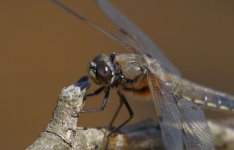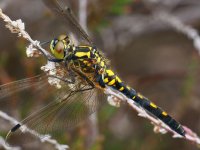-
Welcome to BirdForum, the internet's largest birding community with thousands of members from all over the world. The forums are dedicated to wild birds, birding, binoculars and equipment and all that goes with it.
Please register for an account to take part in the discussions in the forum, post your pictures in the gallery and more.
You are using an out of date browser. It may not display this or other websites correctly.
You should upgrade or use an alternative browser.
You should upgrade or use an alternative browser.
Sigma 150 or 180 macro (1 Viewer)
- Thread starter v_cowell
- Start date
More options
Who Replied?SteveClifton
Well-known member
I am going to buy a macro lens for insect and butterfly macro and want to know your opinion on which is the better lens.
I have owned the 150 lens in the past and found it a stunningly sharp lens.
Interesting dilemma, and to be honest whichever way you go you're in a win win situation.
I bought a Sigma 180 last month from Warehouse Express, mainly for the extra reach, and also because at current prices it was about £100 cheaper than the Sigma 150. It was a no-brainer for me. This review is what swung my decision:
http://www.juzaphoto.com/eng/articles/sigma_180mm_macro_review.htm
At this time of year I spend more time out photographing butterflies and dragonflies than birding, usually with a friend who uses a Sigma 150. He always uses his lens with a Sigma 1.4 converter to get the extra reach (210mm). Just last weekend he said he wondered if he should have got the 180mm, to which I answered perhaps I should have actually got the 150mm. This was mainly because I read the following review online and it stated at the end that the 150 was slightly more convincing overall, but not by a huge margin. Seeds of doubt were sown, however, in my mind.
http://www.photozone.de/canon-eos/305-sigma-af-180mm-f35-ex-hsm-apo-macro-test-report--review
I suppose this is a case of 'the grass is always greener'. Both lenses are excellent and we are both pretty happy with the results we get with our respective lenses.
Another factor is that I fully intended to buy and use a TC to use with my lens, but haven't so far as I also have a Canon 100-400 zoom which I tend to use for more wary subjects, sometimes with a 25mm tube to reduce the minimum focus distance. I find that the two lenses complement each other quite well most of the time if I can be bothered to carry the extra weight. The 180 is sharper by a clear margin, and I prefer to use it, especially for smaller or closer subjects, if I can get near enough.
To summarise, if you will be using your lens for closer subjects or small bugs, and might want e.g to photograph just the head of a butterfly, then get the 150, but if you think your quarry might be larger and more wary (larger butterflies & dragons for example) then the longer lens might be a better choice, or at least budget to get a 1.4 TC to use with the 150. For longer range subjects where ultra-detail isn't a major priority I really doubt that you'd see much difference in the results.
I suspect that sample variation might account for the slight difference in some reviews of the 180mm. Despite the slightly negative findings of one or two reviewers, there are still plenty of glowing reviews of the lens where it is even compared very favourably with Canon's own 180 Macro. Furthermore, I don't think I've ever read a bad review of the 150 lens.
Good luck with whatever you decide to get,
Steve
Last edited:
v_cowell
Well-known member
Thanks for taking time to give such an in depth reply Steve.
I already have a Sigma 1.4 tc to marry with my lens, and think it will be fairly well used.
I think I am leaning towards the 150 version slightly and have found one for sale at Jessops (in stock tomorrow would you believe) for £529. That's cheap (ish).
I have not placed an order for it yet but they are going to ring me when it arrives and I can go and try it in store.
I already have a Sigma 1.4 tc to marry with my lens, and think it will be fairly well used.
I think I am leaning towards the 150 version slightly and have found one for sale at Jessops (in stock tomorrow would you believe) for £529. That's cheap (ish).
I have not placed an order for it yet but they are going to ring me when it arrives and I can go and try it in store.
SteveClifton
Well-known member
Hand held is the general order of the day.
I'm gonna get the 150 again.
mind you I have been doing quite well with my 70-200 f/4 L + 1.4tc and
31mm extension tube.:t:
This is something have never understood (buying a high quality macro lens and then compromising IQ by not using it on a tripod).
Please don't take my comments the wrong way, but I just don't see how you can get acceptably sharp results by hand holding a long macro lens like The two Sigmas in question, or Canon's 180. In my experience using the 180, or any long lens such as the Canon 100-400L, focussing for close-up subjects like dragonflies is absolutely critical. Typically I have to use magnified live view (5x) to ensure I get the bits I want nice and sharp, as in the attached example. I was careful to focus on the area just behind the subject's head, but even at F14 & 1/80 sec, and with the subject almost parallel to the lens, its abdomen is still blurred.
Ok, so you will be lucky and get perhaps 1 in 10 shots where you just happen to hold the camera in the correct plane/distance from the subject so that the desired bits are in sharp focus, but mostly you are going to sway back or forward just far enough (less than 1cm is all it takes) to lose focus. Even a lens with built in IS cannot compensate for the DOF problems that are typical with DSLR cameras and longer lenses, as they only correct for lateral movement.
I have done a lot of this type of photography over the last 2-3 years, with 3 different long lenses and various combinations of tc's and extension tubes, and usually in typical UK light conditions. Always I am fighting against a compromise between wafer-thin DOF and shutter speeds that are just fast enough to freeze any motion blur from the wind or movement of the subject (it's surprising just how much vibration is caused by wind, even on a 'still' day).
Interestingly I met a guy in Norfolk the other week who was using one of the older Sony bridge cameras (think it was a H1 or something similar. Recent models typically have about 10-12MP, 12-20x zooms and built in IS) to photograph dragonflies, and he found that it was far easier to get sharp pictures than with his expensive Nikon DSLR with macro lens without a tripod, because of the built in IS and the greater DOF (which is presumably a result of the smaller sensor?) So much so that he rarely carries the full DSLR kit into the field any more.
This is just food for thought, but surely having an expensive DSLR macro set up and not using a tripod is a bit like owning a Ferrari and only using it to commute to work through the city rush hour! In other words, you will never realise the full performance that it is capable of.
At about 1/4 the price of the Sigma 150/180 and a decent (used) body like a 40D, surely such cameras make a lot of sense if you insist on not carrying a tripod, not mentioning the lighter weight and ease of use. I think many of the later models also shoot RAW and HD video too! and make decent general purpose 'happy snappy' cameras for family occasions/holidays etc.
Steve
Attachments
Last edited:
v_cowell
Well-known member
I too have to agree with you Steve, but also have found that the incumberence of carrying and setting up a tripod is too much bother.
If I had to use a tripod then I probably would buy a bridge camera instead.
A couple of guys I know use flash to fill in and help with low light when using small apertures for increased DOF. This also helps to freeze any motion in the subject I presume.
If I had to use a tripod then I probably would buy a bridge camera instead.
A couple of guys I know use flash to fill in and help with low light when using small apertures for increased DOF. This also helps to freeze any motion in the subject I presume.
SteveClifton
Well-known member
I too have to agree with you Steve, but also have found that the incumberence of carrying and setting up a tripod is too much bother.
If I had to use a tripod then I probably would buy a bridge camera instead.
A couple of guys I know use flash to fill in and help with low light when using small apertures for increased DOF. This also helps to freeze any motion in the subject I presume.
Yes, flash is something I haven't experimented with much yet, but in our climate I should think if you can master it it must help considerably with getting sharper images with better DOF.
tjsimonsen
Well-known member
In principle I too agree with Steve on this one, which is one reason why I use an EF 100/2.8 USM and generally a flash for macro work. A tripod simply gets in the way - especially for macro work.
Thomas
Thomas
Similar threads
- Replies
- 4
- Views
- 925
Users who are viewing this thread
Total: 2 (members: 0, guests: 2)





